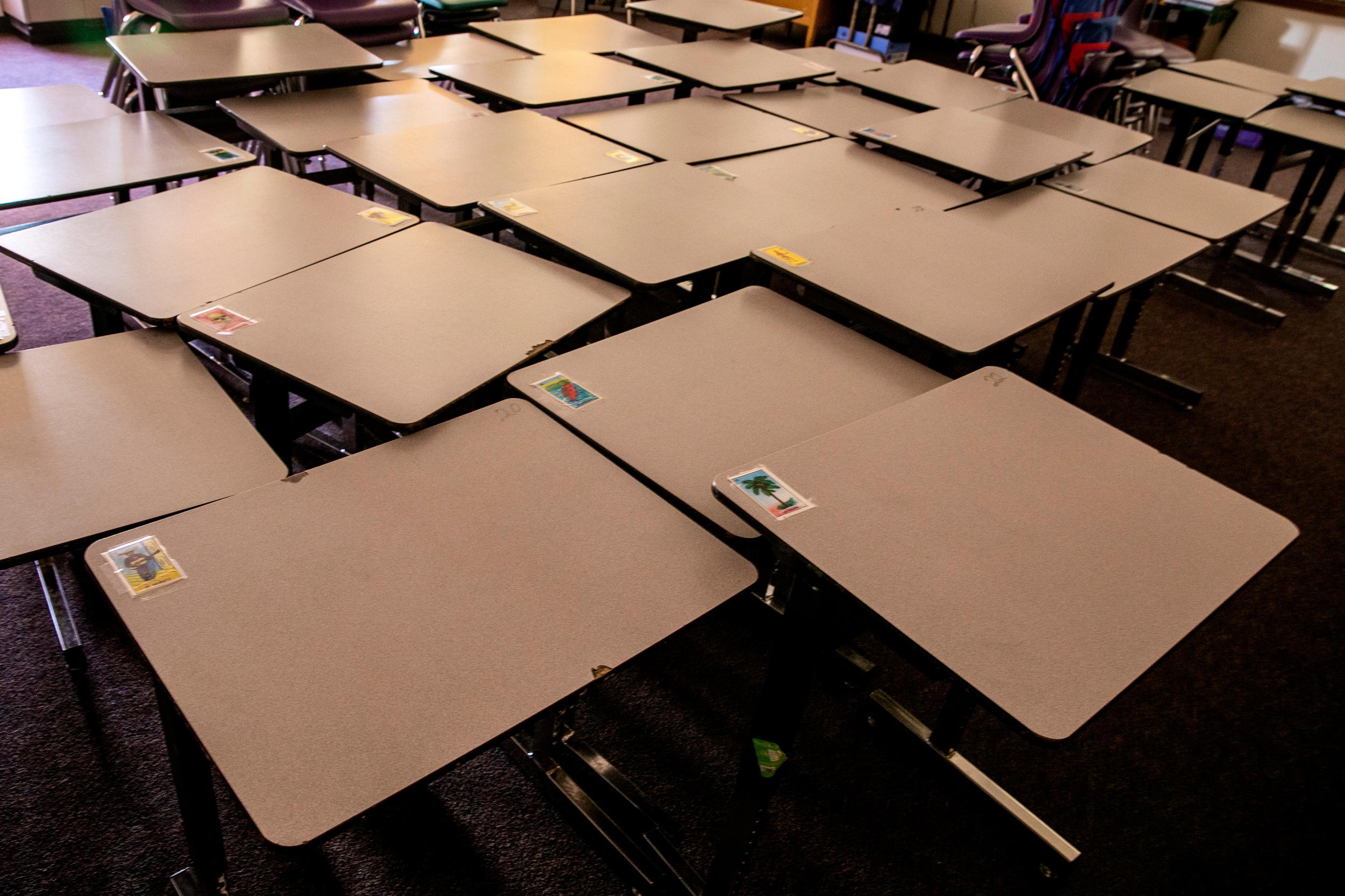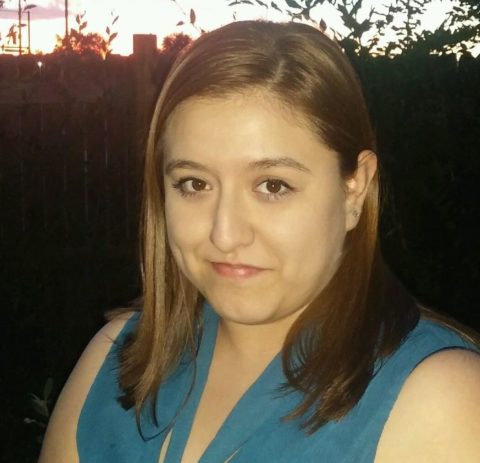
This story was originally published by Chalkbeat. Sign up for their newsletters at ckbe.at/newsletters
When Adriana Paola and her family arrived in Boulder in 2017, her son, who was starting high school, loved math.
Slowly, she saw her son’s passion for the subject fade and she realized his math class was too easy. So, she went with her son to the school counselor’s office and asked for him to be enrolled in a more advanced class.
She recalls the counselor questioning the request, saying that his class was “the class that Latinos go into.” It took going to the principal, before the request was approved. Once in the advanced math class, her son noticed he was one of just two Latino students.
Paola recalls the experience as a shock to her and her family.
“That was like our first red flag that there’s something wrong with the system,” she said. “We saw there was no equity.”
Efforts to enroll more Colorado students of color in advanced courses sometimes focus on encouraging students to see their own potential. The experiences of these Boulder moms show how prejudice from educators can shape the opportunities students have.
A recent report from a group of northeastern Colorado school districts that received a state grant to improve diversity in advanced courses similarly found that many teachers underestimated students’ abilities.
And getting access to advanced courses in high school can be important to getting into college, being prepared for it, and to letting students feel confident that they can succeed.
In recent years, Paola has connected with other Hispanic moms whose children have gone through similar experiences at multiple high schools in the district.
Noemi Lastiri’s daughter walked into her advanced science class on the first day of school last year and the teacher asked her if she was in the wrong class. In another class, her daughter was assigned to sit next to the few Latino students, and she told her mom that when they raised their hands, they were never called on.
Things changed when another Latina classmate walked out of class, frustrated, and straight to the school office to complain.
Some moms say they’ve been told by teachers or school administrators that their children with autism or ADHD (attention deficit/hyperactivity disorder) who need support, can’t receive assistance in advanced classes. If parents believe their children need extra help, they have been told they could get private tutoring outside school or keep their children in general education classes.
Recently, they’ve been speaking out, and want the district to make changes.
“It’s not that some kids can and other students can’t,” Paola said. “Anybody could take these classes if someone truly motivated them and offered accommodations, if there was truly a structure of support, especially for those students who have had the least access to these classes.”
Boulder Valley School District officials say that, while they can’t respond to individual cases, they started hearing similar stories recently and are making changes.
“It’s absolutely heartbreaking. It’s absolutely unacceptable that students are having these experiences,” said Lora De La Cruz, deputy superintendent of academics for the Boulder district. “What we’re seeing here does not align with our values as a district, our values as a community.”
De La Cruz said that after hearing of the problems Latino students have had in accessing advanced classes, or support once they are enrolled, district leaders have rolled out new teacher training.
Boulder teachers usually have many training opportunities from which to choose, including classes on culturally responsive practices, but this fall was the first time all teachers were required to learn how to create inclusive classroom environments so all students feel they belong.
“As we get more focused in our work around what we are changing, where we’re evolving in our instruction in our building positive climate and culture within our classrooms and schools, we decided that we wanted to get even more focused on professional learning,” De La Cruz said.
Parents are glad the district is focusing on all teachers. Many worry that the problems their children have experienced start from a young age.
“Students are absorbing messages. Ever since they start kindergarten, they are receiving these messages about what they can and can’t do,” said parent Anna Segur. Her high school-age son is no longer interested in taking advanced classes, despite her encouragement, because of a previous bad experience. “It’s not a problem of intelligence.”
De La Cruz points to the district’s existing strategic plan which calls for various efforts to close the large gaps in achievement among white students and students of color. Because of those goals, the district has a public website that tracks data on educational gaps. One of those is how many students are enrolled in advanced courses, combining figures for classes including honors, Advanced Placement, concurrent enrollment, and others. Concurrent enrollment courses give students college credit while counting toward high school graduation requirements.
Currently, the dashboard shows 14.7% of students enrolled in advanced courses are Hispanic, while they make up 20% of the entire district’s student population. Black students are also underrepresented while white and Asian students are overrepresented.
Additional data provided by the district shows that from 2021-22 to the 2022-23 school year, the percentage of Hispanic students in Advanced Placement or International Baccalaureate classes has actually decreased. But at the same time, many more Hispanic students took concurrent enrollment or other advanced classes, making up for the decline in AP and IB.
The number of students taking concurrent enrollment classes was 1,143 in 2022-23, almost double 2021-22 numbers. The percentage of Hispanic students participating in those classes increased from 10.9% to 11.8% in the last school year.
The district touts those improvements as early results from a new project focused on getting all students to have something to go along with their high school diploma. That could be college credit, workplace experience, industry certifications, or a seal of biliteracy.
“We know all of our students are brilliant and very capable and have the potential of reaching all of their goals,” said Bianca Gallegos, executive director of strategic partnerships for the Boulder Valley district. “We’re very excited to be able to open up paths and opportunities for all students with a specific focus on us ensuring that we’re opening up pathways, opportunities for Latinx, Hispanic Latino students, and students who qualify for free and reduced [price] lunch.”
The district wants to have more students participate this year in the state’s fifth year of high school program, called ASCENT, which allows students to earn an associate degree along with their diploma. Another project goal is that 35% of high school students take a concurrent enrollment class this year and that the demographics of those classes more closely mirror the district’s.
Lastiri said that she was happy to hear the district is making changes and striving to make things better. Her daughter, now a sophomore who changed high schools within the district, is so far having a better experience this school year.
She’s taking two advanced classes this semester.
Regarding the changes, she said, “it’s never too late.”
Yesenia Robles is a reporter for Chalkbeat Colorado covering K-12 school districts and multilingual education. Contact Yesenia at [email protected]. Chalkbeat is a nonprofit news site covering educational change in public schools.








